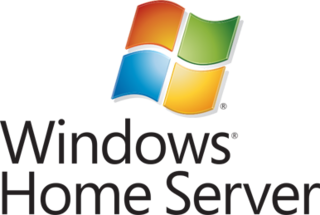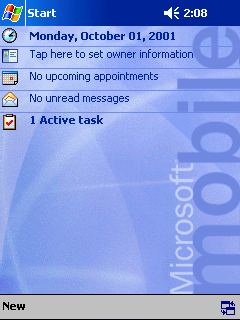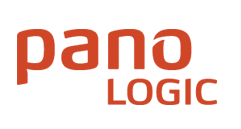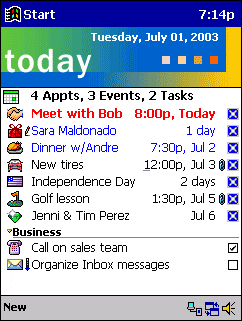Technology
The Smart Display was a battery-powered 10" or 15" LCD monitor with a touchscreen (similar in size and shape to a Tablet PC), connecting to a PC over an 802.11b WiFi network, with input via Transcriber (similar to Graffiti) or a pop-up soft-keyboard for text entry, and built-in speakers. Some models had a docking unit with wired PC, keyboard and mouse connectors.
The display ran Smart Display OS or Microsoft Windows CE for Smart Displays, based on Windows CE and .NET. The remote technology was based on Windows Terminal Server. Smart Display OS 1.0 would only connect to a Windows XP Professional host system, although some reported that any version of Windows could be remote-controlled using NetMeeting.
ViewSonic was the first manufacturer to bring Smart Display to the market, with the airpanel V150 in early 2003. This included a 15" 1024×768 LCD, a 400 MHz Intel XScale processor, 32MB ROM, 64MB RAM and 802.11b wireless, and a USB wireless hub for the host PC.
History
Mira was announced by Bill Gates at the 2002 Consumer Electronics Show:
A new set of Windows CE .NET-based technologies, code-named 'Mira', will enable a new generation of smart displays that give people the freedom to experience the power of Windows XP from anywhere in their home. Harnessing the remote desktop and wireless networking features of Windows XP and Windows CE .NET, 'Mira'-enabled smart displays will deliver to consumers the freedom of the complete experiences in Windows, including browsing the Web, sending or receiving e-mail messages, listening to music, and editing and displaying digital images, from any room in the home.
The initial announcement mentioned technology partnerships with AboCom, Fujitsu, Intel, LG Electronics, National Semiconductor, NEC, Philips Consumer Electronics, Tatung, TriGem, ViewSonic, Wistron and Wyse.
Smart Display OS 1.0 was supported by several monitor manufacturers, including Samsung, LG, TriGem, Philips, ViewSonic, Fujitsu and NEC. Products included the Fujitsu FMSDP-101, the NEC PK-SD10, the Philips DesXcape, the Trigem Play@PAD and the ViewSonic airpanel. [6]
Smart Display OS 1.5, scheduled for the end of 2003, was intended to allow a PC to connect simultaneously to a monitor and a smart display. Microsoft later changed its timetable to include a release of Smart Display OS 2.0 in late 2004 with additional functions such as mobile image processing.
Microsoft Windows is a product line of proprietary graphical operating systems developed and marketed by Microsoft. It is grouped into families and sub-families that cater to particular sectors of the computing industry -- Windows (unqualified) for a consumer or corporate workstation, Windows Server for a server and Windows IoT for an embedded system. Defunct families include Windows 9x, Windows Mobile, Windows Phone, and Windows Embedded Compact.

Windows XP is a major release of Microsoft's Windows NT operating system. It was released to manufacturing on August 24, 2001, and later to retail on October 25, 2001. It is a direct upgrade to its predecessors, Windows 2000 for high-end and business users and Windows Me for home users, and is available for any devices running Windows NT 4.0, Windows 98, Windows 2000, or Windows Me that meet the new Windows XP system requirements.

A Pocket PC is a class of personal digital assistant (PDA) that runs the Windows Mobile or Windows Embedded Compact operating system that has some of the abilities of modern desktop PCs. The name was introduced by Microsoft in 2000 as a rebranding of the Palm-size PC category. Some of these devices also had integrated phone and data capabilities, which were called Pocket PC Phone Edition. Windows "Smartphone" is another Windows CE based platform for non-touch flip phones or dumber phones.
Windows Embedded Compact, formerly Windows Embedded CE, Windows Powered and Windows CE, is a discontinued operating system developed by Microsoft for mobile and embedded devices. It was part of the Windows Embedded family and served as the foundation of several classes of devices including the Handheld PC, Pocket PC, Auto PC, Windows Mobile, Windows Phone 7 and others.
Virtual PC is an x86 emulator for PowerPC Mac hosts and a virtualization app for Microsoft Windows hosts. It was created by Connectix in 1997 and acquired by Microsoft in 2003. The Mac version was discontinued in 2006 following the Mac transition to Intel, while the Windows version was discontinued in 2011 in favour of Hyper-V.

ViewSonic Corporation is an American privately held multinational electronics company with headquarters in Brea, California, United States.
Remote Desktop Protocol (RDP) is a proprietary protocol developed by Microsoft Corporation which provides a user with a graphical interface to connect to another computer over a network connection. The user employs RDP client software for this purpose, while the other computer must run RDP server software.

Windows Mobile is a discontinued mobile operating system developed by Microsoft for smartphones and personal digital assistants.

A handheld personal computer (PC), typically built around either a clamshell form factor or a gaming form factor with a gamepad integrated for video games, is a mobile device that is significantly smaller than any standard personal computer (PC), but based on the same principles as PCs. The clamshell form factor is sometimes referred to as a palmtop computer, not to be confused with Palmtop PC which was a name used mainly by Hewlett-Packard.

Windows Live Mesh is a discontinued free-to-use Internet-based file synchronization application by Microsoft designed to allow files and folders between two or more computers to be in sync with each other on Windows and Mac OS X computers or the Web via SkyDrive. Windows Live Mesh also enabled remote desktop access via the Internet.
Windows Media Center Extenders are devices that are configured to connect over a computer network to a computer running Microsoft Windows XP Media Center Edition, Windows Vista Home Premium/Ultimate, Windows 7 Home Premium, or Windows 8 with a Pro pack to stream the computer's media center functions to the Extender device. This allows use of the Media Center and its features on a television receiver or other electronic visual display.

Windows Home Server is a home server operating system from Microsoft. It was announced on 7 January 2007 at the Consumer Electronics Show by Bill Gates, released to manufacturing on 16 July 2007 and officially released on 4 November 2007.

Pocket PC 2002, originally codenamed "Merlin", was a member of the Windows Mobile family of mobile operating systems, released on October 4, 2001. Like Pocket PC 2000, it was based on Windows CE 3.0.
Remote Desktop Services (RDS), known as Terminal Services in Windows Server 2008 and earlier, is one of the components of Microsoft Windows that allow a user to initiate and control an interactive session on a remote computer or virtual machine over a network connection. RDS was first released in 1998 as Terminal Server in Windows NT 4.0 Terminal Server Edition, a stand-alone edition of Windows NT 4.0 Server that allowed users to log in remotely. Starting with Windows 2000, it was integrated under the name of Terminal Services as an optional component in the server editions of the Windows NT family of operating systems, receiving updates and improvements with each version of Windows. Terminal Services were then renamed to Remote Desktop Services with Windows Server 2008 R2 in 2009.
Windows XP, which is the next version of Windows NT after Windows 2000 and the successor to the consumer-oriented Windows Me, has been released in several editions since its original release in 2001.

Pano Logic was a manufacturer of devices which present virtual desktops to the end user with no local processing power. They describe this concept as "zero client". This is perceived as offering benefits in end-user support and in power provision to desks. OEM versions have been included in displays from some vendors, allowing a single unit to be deployed. The company failed in October 2012. In March 2013, Propalms announced they had acquired the rights to support Panologic customers, and will "help transition the customer base to a new platform".

DisplayLink is a semiconductor and software technology company owned by Synaptics that develops the DisplayLink USB graphics technology. This technology enables computers and displays to connect using USB, Ethernet, and WiFi and also allows for multiple displays to be connected to a single computer. DisplayLink's primary customers include notebook OEMs, LCD monitor manufacturers, and PC accessory vendors, and their technology is compatible with a wide range of operating systems, including Microsoft Windows, macOS, Android, ChromeOS, and Linux.

Microsoft Tablet PC is a term coined by Microsoft for tablet computers conforming to a set of specifications announced in 2001 by Microsoft, for a pen-enabled personal computer, conforming to hardware specifications devised by Microsoft and running a licensed copy of Windows XP Tablet PC Edition operating system or a derivative thereof.

Joe Belfiore is an American business executive who has held various roles at Microsoft since August 1990, mostly in the field of user experience. A frequent speaker, Belfiore has appeared at many Microsoft conferences, often giving demos on stage and/or acting as a spokesperson for the company. In 2018, he was named the #1 Microsoft Influencer for fans to follow on Twitter. In 2004, he gave a TED Talk in-person at the TED Conference in Monterey,CA. In summer 2023 he retired from Microsoft and is now active as chair of a non-profit board.

Pocket PC 2000 was the first member of the Windows Mobile family of mobile operating systems that was released on April 19, 2000, and was based on Windows CE 3.0. It is the successor to the operating system aboard Palm-size PCs. Backwards compatibility was retained with such Palm-size PC applications.











